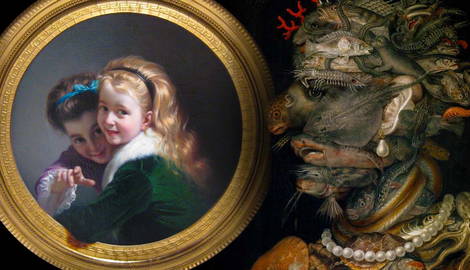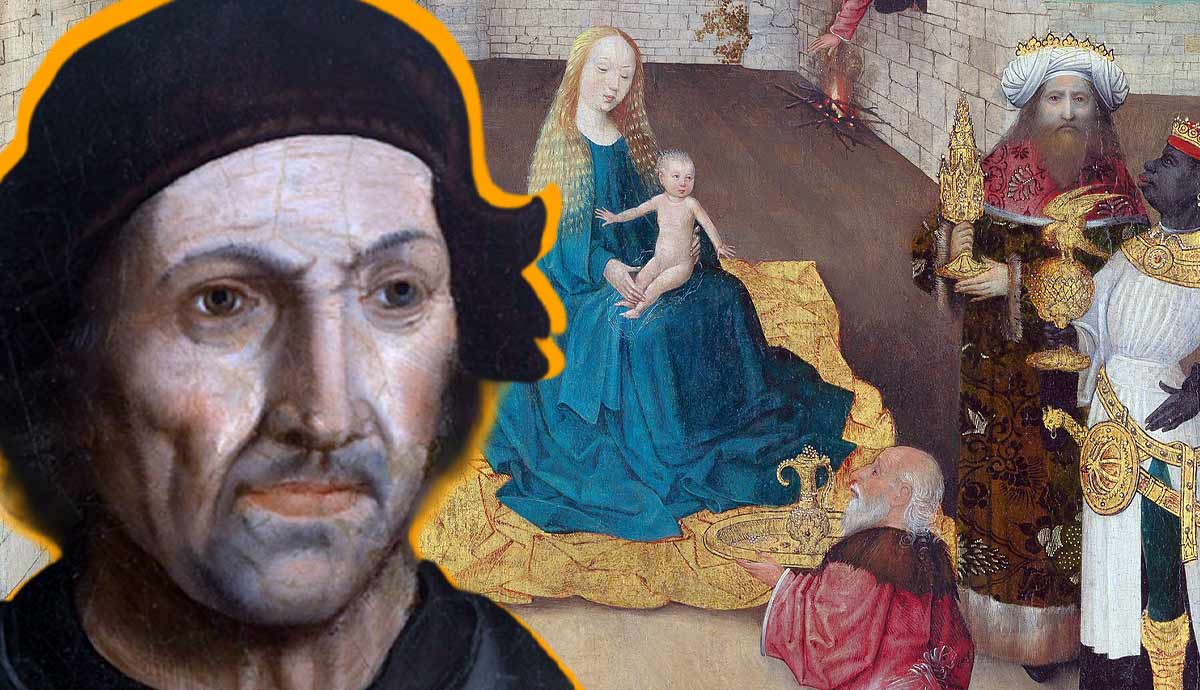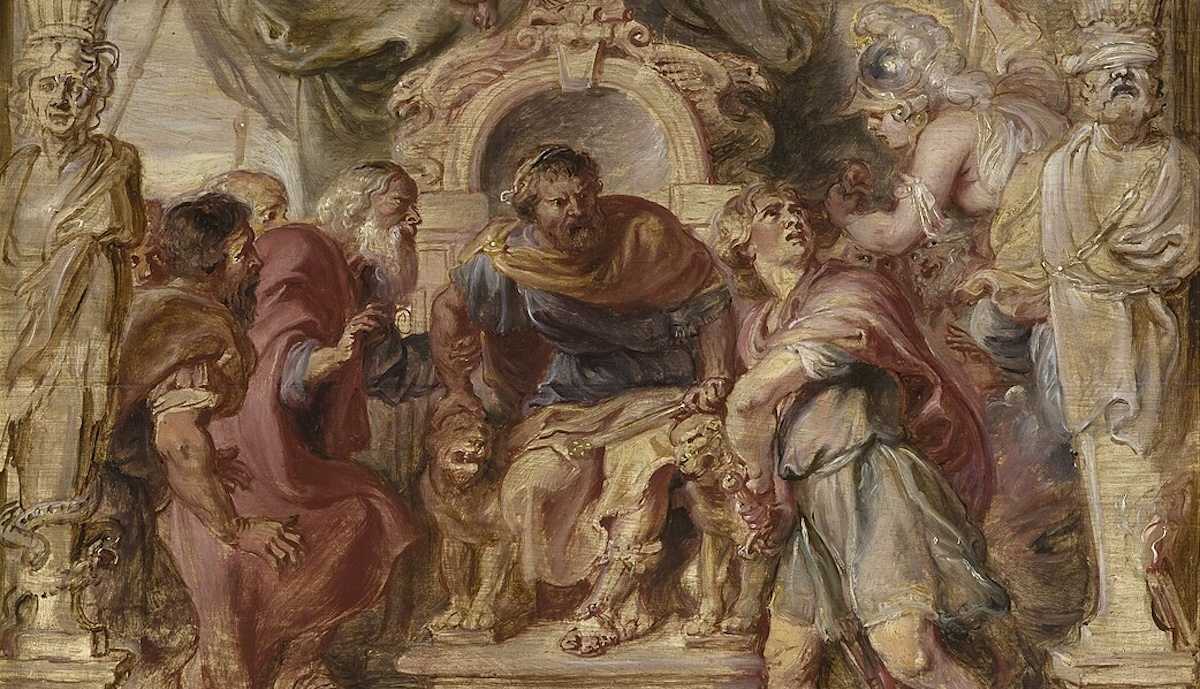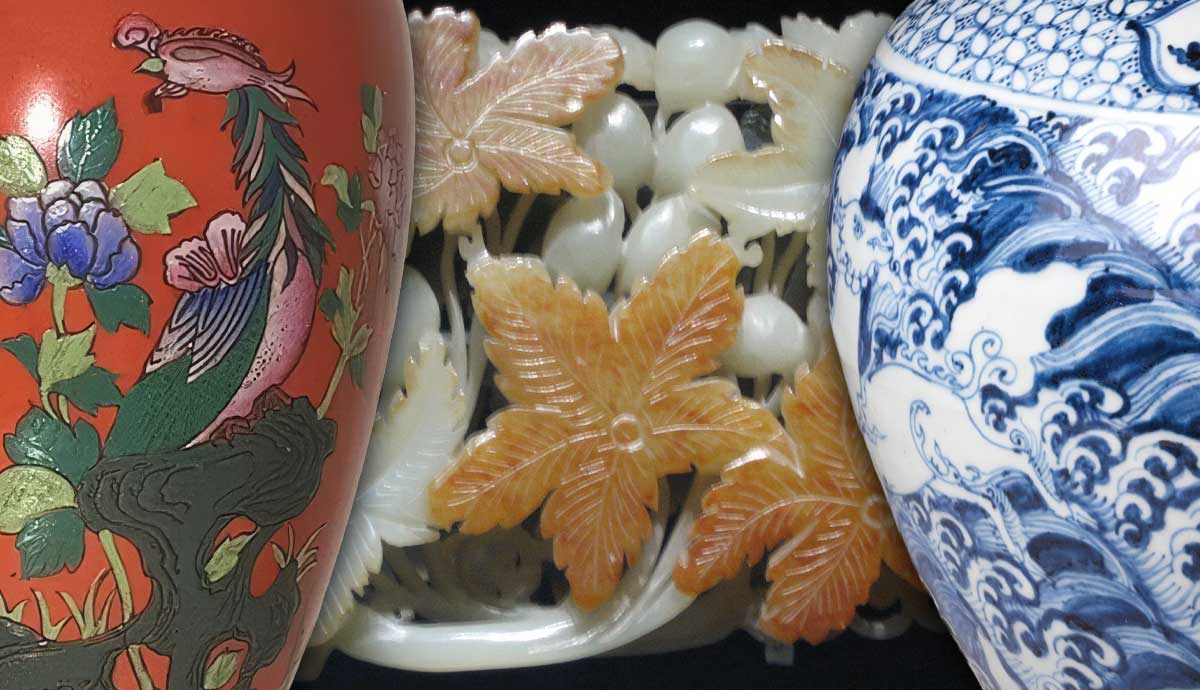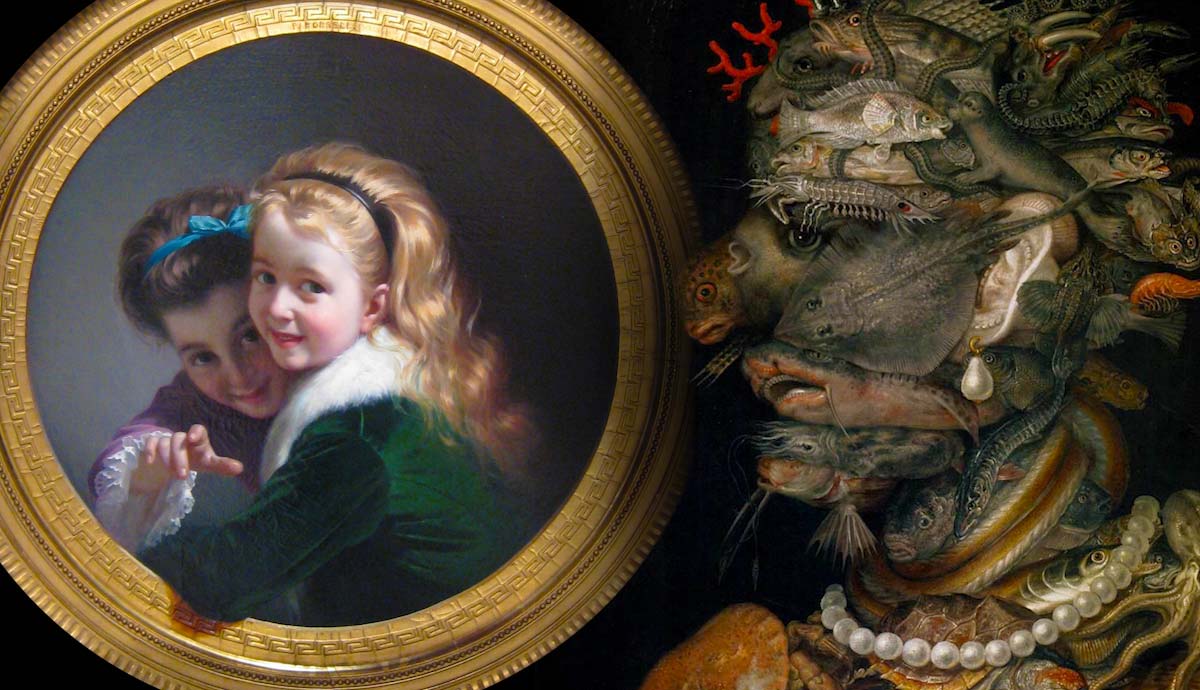
summary
- Definition: Trompe l’œil is an artistic technique that creates the illusion of three dimensions on a flat surface.
- Origins: It originated in ancient Greece and evolved through Mannerism, Baroque, and modern art movements.
- Influence: This “deceive the eye” approach has influenced painting, architecture, fashion, and advertising.
Trompe l’oeil is a painting technique that makes painted objects appear realistic and three-dimensional. Since its emergence in ancient times—although the term itself appeared in the 1800s—it has developed further into the domains of architecture and even fashion. Read on to learn all there is to know about the fascinating history, methods, and aims of trompe l’oeil.
The Origin of the Trompe L’Oeil Technique

Trompe l’oeil is an artistic technique that creates a visual illusion, making elements of the painting appear to come alive in the viewer’s eyes. Trompe l’oeil is a French term that translates to “deceiving the eye,” which explains its essence.
The earliest known implementation of this technique in art dates back to ancient Greece and Rome. After all, Greek art aimed to imitate reality. According to legend, the painter Zeuxis painted a bunch of grapes so realistically that birds tried to eat them.
The trompe-l’oeil tradition was then passed down to ancient Rome. The frescoes found on the walls of the houses in Pompeii and Herculaneum, buried in ash for centuries, had painted windows and arches on them, visually enlarging the space.
Trompe L’oeil Throughout History: A Brief Overview

Trompe l’oeil was and remains essentially a decorative method that requires great skill and precision. Still, not every realistic painting can be called a trompe l’oeil. The core element of the trompe l’oeil is the intent to deceive, a deliberate attempt to confuse the viewer and make them reach out for the non-existent objects and spaces they see in the painting.
During the Middle Ages, the art of illusion fell out of favor. Medieval art was mostly two-dimensional and had little interest in realistic rendering of space.
Still, trompe l’oeil made its comeback in the 16th century with the art movement called Mannerism (more on that later). Before that, from the early Renaissance, some artists painted portraits or elements of still life spilling out of a false frame to create a three-dimensional effect. Similarly, fake domes or windows tricked viewers into believing they were seeing the real thing.

In the 19th century, more artists started to experiment with optical effects and illusions. Some, like the Impressionists, aimed to unlock new ways of seeing and uncover new perspectives. After the invention of photography, many painters believed that instead of competing with the latest technology, they could focus on something unavailable to the new devices, such as emotion and feeling. Other artists, however, aimed at maximal realism, competing not with technology but with nature itself.
Catalonian artist Pere Borrell del Caso was a successful portraitist who nonetheless became famous for his series of trompe l’oeil paintings. On his canvases, giggling girls point fingers at the viewer, and boys escape paintings through their frames.
An accomplished artist in his time, Borrell nonetheless rarely gets mentioned in art history books. The reason for this could be that his artworks were curious decorations intended to amuse the guests and spark conversation in the living room. The practical entertaining purpose of these paintings separated them from the conceptual and experimental art movements of Borrell’s time.
Mannerism and Illusion

Some art historians do not consider Mannerism a separate phenomenon, recognizing it as a part of the Baroque art that would follow. Still, Mannerism was all about visual effects, expressive gestures, puzzling compositions, and bold experiments. While the famous Giuseppe Arcimboldo constructed portraits from painted fruit, vegetables, and seafood, others dived into the imitation of architectural forms and sculptures.

The most popular examples of trompe l’oeil of the Mannerist and Baroque eras could be found in churches. The artists created illusions of higher ceilings and domes that seemed to reach the sky, with angels and the Virgin Mary looking down from above. From sacred spaces, the art of deceiving the eye migrated to villas and mansions, where hosts would surprise their guests with hidden passages, sculptures, and arches that seemed to have never existed. Such a trick was not only a fashionable decoration but a symbol of status and an element of entertainment.
Yet, many artists and theoreticians criticized trompe l’oeil paintings for trying to appear as something they were not. For them, such imitation was not an ironic joke but an actual, yet badly organized, deceit and a futile act of artistic vanity. One of the most common yet overlooked uses for trompe l’oeil was theater set design. The backdrops on the stage used forced perspective to turn a small space into a vast field, a sea, or a lush garden.
Modern Artists and The Art of Deceiving

After elaborate Baroque decorations fell out of fashion, the trompe l’oeil did not disappear. For a considerable period, it existed in the form of imitated textures of wood or marble in painted compositions or incredibly realistic still-lifes. Everything changed radically in the 19th century.
With the development of industrial mass production, the competition between manufacturers became unprecedented. Advertising became the primary way to attract customers to the brand, with trompe l’oeil becoming immensely popular in package design.
The new generation of artists also revived the practice of trompe l’oeil, but their reasons differed from entertainment or marketing. The development of psychiatry made people focus on the ambiguous, subconscious, and questionable: trompe l’oeil was the perfect way to explore illusions created by the human psyche.

Trompe l’oeil was immensely popular among the Cubists and the Surrealists. In the early days of Cubism, Georges Braque and Pablo Picasso imitated paper and wood in their compositions. Soon they made a step further—or back, depending on interpretation—and implemented actual newspaper cutouts, fabrics, and pieces of furniture.
The Surrealists moved even further. While some artists, such as Salvador Dalí, used trompe l’oeil and optical illusions in their works, others, like René Magritte, further developed the idea of visual deception. Magritte believed that a painted image in itself was deceptive since it was not equal to the object it was depicting, but merely imitated it.
The Trompe L’Oeil Technique in Fashion

After establishing itself in the domains of visual art and architecture, the concept of trompe l’oeil found its way into fashion design. Elsa Schiaparelli, the great pioneer of haute couture, was the designer who first thought of incorporating illusion into garment design. In 1927, Schiaparelli designed a sports sweater featuring a bow on its neckline, which was not sewn on but knit directly into the piece. Apart from Schiaparelli’s long interest in ambiguous and original fashion, this decision had a more practical purpose.

Several years prior to the invention, Vogue magazine reported that sports fashion was occupying three-quarters of the Parisian fashion market due to its practicality for the more active lifestyles of contemporary women. Schiaparelli’s goal was to make sportswear elegant without compromising comfort and utility. A group of Armenian women hired by Schiaparelli made sweaters using the traditional hand-knitting technique. She then attended a dinner party in her new bowtie sweater, with a string of orders following immediately.
In recent years, the Maison Schiaparelli fashion house has gone through a massive revival after more than five decades of silence. Daniel Roseberry, the creative director of the brand, aimed at reviving the legacy of Elsa Schiaparelli in the new age while avoiding direct imitations of her work. Still, one of the collections designed by Roseberry included his version of the trompe l’oeil bow sweater.

A lot has changed since Elsa Schiaparelli’s time, so the trompe l’oeil patterns no longer shock the public as they once did. Over the years, the trompe l’oeil in fashion became one of the design staples. The most popular illusion is the one of a naked body instead of a garment, found in the works of legendary designers such as Vivienne Westwood and Jean-Paul Gaultier.
Gaultier, in fact, went further than simply replicating his trompe l’oeil bodies. He constructed his silhouettes from a pattern of brightly colored dots, creating an illusion of depth and volume. His 1995 Fall-Winter collection represented imaginary amazons of the cyberpunk future, implementing technology into attire.
Trompe L’Oeil in Contemporary Art

Despite concepts and ideas evolving, the idea of trompe l’oeil remained a constant presence on the art scene, taking various forms. One of them could be found in Pop Art, particularly in the works of Swedish-American sculptor Claes Oldenburg. Oldenburg created copies of burgers, pastries, or sandwiches from inedible materials like plaster and cheap house paint. At first glance, the sculptures seem mouthwatering, yet after a moment of examination, they disappoint and perplex the viewer.

In recent years, trompe l’oeil once again lost the favor of galleries and museums but found itself a new domain. Contrasting with the hierarchical art world fueled by money and power, street art is a rather democratic and welcoming field.
Trompe l’oeil artworks found in the streets can be dramatic and eye-catching, like the giant sinkhole in London, or something more elegant in the form of murals. The famous street artist JR often uses trompe l’oeil in his gigantic collages and murals that augment and distort reality.
